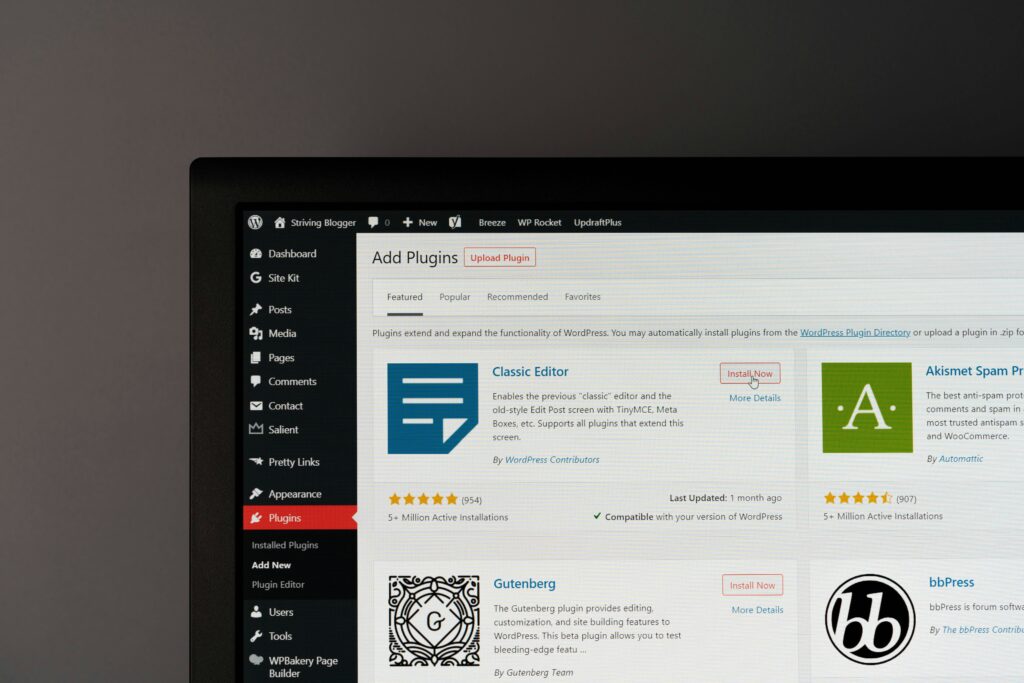In today’s digital landscape, your website is often your first impression—so it better be fast, secure, and SEO-friendly. As a WordPress and SEO expert, I’ve seen firsthand how optimizing your website from day one can drastically improve traffic, performance, and user trust.
In this guide, I’ll walk you through exactly how to build a high-performance WordPress site by focusing on three key pillars: Speed, Security, and SEO
Speed: Make Your Site Blazing Fast
Site speed directly impacts SEO, bounce rate, and conversions. Here’s how to turbocharge your WordPress site:
1. Choose a Lightweight Theme
Select a performance-optimized theme like:
-
GeneratePress
-
Astra
-
Hello Elementor
Avoid bloated themes with too many built-in features that you’ll never use.
2. Use Quality Hosting
Fast hosting is the foundation of performance. Choose:
-
Managed WordPress Hosting (e.g., Kinsta, WP Engine)
-
LiteSpeed or NGINX servers
Cheap shared hosting slows your site and hurts your rankings
3. Install a Caching Plugin
Caching reduces server load and improves load times:
-
WP Rocket (premium and powerful)
-
W3 Total Cache
-
LiteSpeed Cache (for LiteSpeed servers)
4. Optimize Images
Use tools like:
-
ShortPixel or Smush
-
Serve images in next-gen formats (like WebP)
-
Lazy load images for better performance
5. Minify CSS, JavaScript, and HTML
Plugins like WP Rocket or Autoptimize can compress code without breaking the site.
Security: Protect Your Site from Threats
WordPress is popular—and that makes it a target. Here’s how to lock it down:
1. Keep Everything Updated
Themes, plugins, and core files must stay current. Set up automatic updates where appropriate.
2. Use a Security Plugin
Install one of the following:
-
Wordfence
-
iThemes Security
-
Sucuri Security
These plugins offer firewalls, malware scanning, and login protection.
3. Disable XML-RPC and Limit Login Attempts
-
Disable XML-RPC unless needed (it’s a common attack vector)
-
Use a login lockdown plugin to prevent brute force attacks
4. Install SSL (HTTPS)
Get an SSL certificate (usually free via Let’s Encrypt) to secure data and improve SEO. Most hosts make this easy.
5. Use Strong Passwords and 2FA
Encourage secure credentials and use two-factor authentication (2FA) to prevent unauthorized access.
SEO: Get Found on Google (The Smart Way)
Without good SEO, even a fast and secure site might go unnoticed. Let’s fix that.
1. Install an SEO Plugin
The right tools help manage on-page SEO:
-
Yoast SEO
-
Rank Math
-
All in One SEO
These plugins let you control meta titles, descriptions, sitemap, and schema markup.
2. Optimize Your Content
-
Use clear H1, H2, and H3 tags
-
Include target keywords naturally
-
Write for users, not just bots
3. Improve Core Web Vitals
Google rewards great user experience:
-
Largest Contentful Paint (LCP): Optimize images and reduce render-blocking scripts
-
First Input Delay (FID): Minimize JavaScript
-
Cumulative Layout Shift (CLS): Use set image dimensions
Use Google PageSpeed Insights or Lighthouse to check your scores.
4. Submit XML Sitemap and Set Up Google Search Console
Make sure search engines can find your content easily by submitting your sitemap and monitoring performance via Google Search Console.
5. Optimize for Mobile
Most traffic is mobile now. Use responsive themes and test with Google’s Mobile-Friendly Test.




